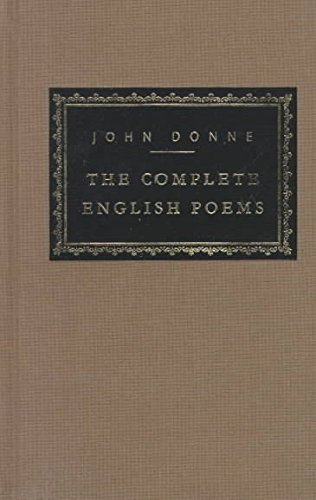 Over a literary career of some 40 years Donne moved from skeptical naturalism to a conviction of the shaping presence of the divine spirit in the natural creation. Yet his mature understanding did not contradict his earlier vision. He simply came to anticipate a Providential disposition in the restless whirl of the world. The amorous adventurer nurtured the dean of St. Paul’s.
Over a literary career of some 40 years Donne moved from skeptical naturalism to a conviction of the shaping presence of the divine spirit in the natural creation. Yet his mature understanding did not contradict his earlier vision. He simply came to anticipate a Providential disposition in the restless whirl of the world. The amorous adventurer nurtured the dean of St. Paul’s.
John Donne
22 January 1572 – 31 March 1631
Donne was an English poet and cleric in the Church of England.
He is considered the pre-eminent representative of the metaphysical poets. His works are noted for their strong, sensual style and include sonnets, love poems, religious poems, Latin translations, epigrams, elegies, songs, satires and sermons. His poetry is noted for its vibrancy of language and inventiveness of metaphor, especially compared to that of his contemporaries. Donne’s style is characterized by abrupt openings and various paradoxes, ironies and dislocations. These features, along with his frequent dramatic or everyday speech rhythms, his tense syntax and his tough eloquence, were both a reaction against the smoothness of conventional Elizabethan poetry and an adaptation into English of European baroque and mannerist techniques. His early career was marked by poetry that bore immense knowledge of English society and he met that knowledge with sharp criticism. Another important theme in Donne’s poetry is the idea of true religion, something that he spent much time considering and about which he often theorized. He wrote secular poems as well as erotic and love poems. He is particularly famous for his mastery of metaphysical conceits.
For my A to Z Classic Reads Challenge
Letter D
Donne
This text contains the complete English poems of John Donne. The detailed notes explain unfamiliar words, clarify obscure references, and refine grammatical complexities; they also give the most important variant reading from selected manuscripts. Avoided are any paraphrases, personal interpretation and unauthorized textual emendations. The book begins with an introduction to the poet and his times, including a bibliography of over 750 items.
This is a new poet to me. The history of this poet intrigues me and I love that the book I have has massive explanations regarding the text.
Peace.



